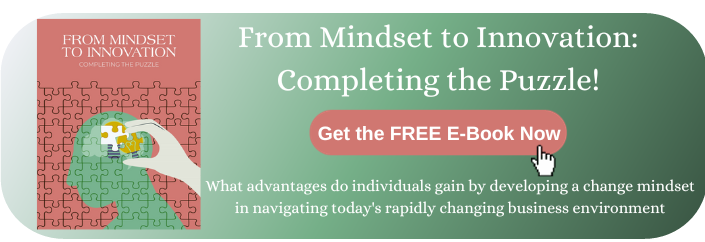Across the Curve of Change!

Depending on the intensity of the change and how hard we perceive it, we go through various sets of emotions through the "Change Curve". The "Change Curve" work is often attributed to psychiatrist Elisabeth Kubler-Ross, resulting from her work on personal transition in grief and bereavement.
As the change hits first, we might experience shock and denial. Those are the initial feelings associated with changes that we perceive as unfavorable. An example could be when a new system is introduced.
We might feel "Shocked". Then, we might start telling ourselves that it will not be implemented because it's not that good, or that management will give up on it, or maybe they won't have a budget to sustain it.
We might then start to experience "Anger", as we realize the system is actually on its way to implementation. Angry at the company, at our manager who allowed this, and maybe even at ourselves as we didn't see it coming. We might even feel betrayed.
This is followed by "Depression". It is not clinical depression. But, it's a sort of grief about losing what we had. We were successful with the old system. We did a great job with it. Now, we cannot guarantee our success. We might even think we might be replaced with the new system.
Then comes "Negotiation" or "Bargaining". We are now sure that the change is taking place. The system is there. We start bargaining for the change. This could take the form of negotiating with management whether we could use the system partially and keep part of the job with the old system. If we could delay the usage of the new system.
"Exploration" is when we know the Change is there to stay. We start exploring the new system and decide whether we will use it or not, or whether we will continue working in the same company or not.
"Acceptance" is when we finally accept the change or get that we cannot work with it and decide whether to stay and use it or leave.
The above emotional phases vary from one person to another based on how we perceive the change. Some people might go through all the phases. Others might move quickly through them. At the same time, some might struggle and get stuck with some phases. It all depends on perception and how we see the change.
Exercise
We invite you to check the two changes you have gone through. One that you consider intense. The other, you consider a light one. Go through the curve above and discover how you felt along the curve. Rate your emotions in terms of intensity.
Change Between the Past and Present
If our parents had gone through those exercises thirty years ago, would they have the same amount of change? According to the statistics below, they probably would have different rates as the world has tremendously accelerated over the past twenty years:
1. Technology: Following Moore's Law, a microchip's transistor count doubles every two years, causing computing capability to rise exponentially. As a result, computer speed and processing power have significantly increased, dramatically changing the technology business. Hard disc storage, for instance, went from 5 GB in 1998 to nearly 16 TB in 2021.
2. Business: Because of globalization, heightened competition, and technological advancements, the pace of corporate Change has quickened. According to a McKinsey analysis, the average longevity of businesses in the S&P 500 index has dropped from 61 years in 1958 to just 18 years in 2012. This indicates that businesses must constantly innovate and
3. Education: The landscape of education has changed due to the Growth of online learning platforms and the expansion of Massive Open Online Courses (MOOCs). According to a survey by EdTech, 36 million students were taking online courses in 2019 compared to 1.6 million in 2002.
The above numbers indicate that change is inevitable in all courses of life. Therefore, it is essential to adopt a change mindset due to the current rapid speed of business, ongoing technical improvements, and the requirement to maintain competitiveness in a continuously changing market.
Organizations today must deal with ongoing disruptions, uncertainty, and complexity to survive. To adapt and succeed, people must adopt a change mindset. Employees with a change mindset are more likely to be adaptable, open-minded, and resilient, crucial qualities needed for success in the modern workplace.
Moreover, change is necessary for growth and development, and a change mindset encourages innovation and advancement inside businesses. Employees who embrace a change mentality can spot areas for development, question the status quo, and create fresh, improved methods of doing things.
For more about this topic, download our latest book "From Mindset to Innovation: Completing the Puzzle!" for FREE:
